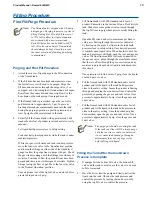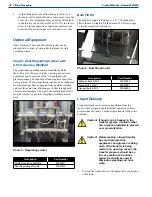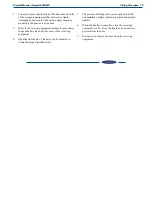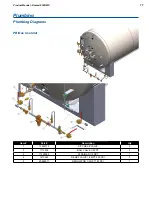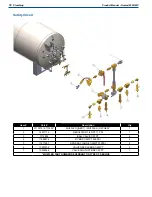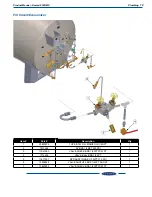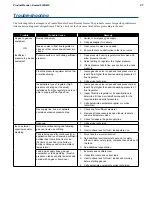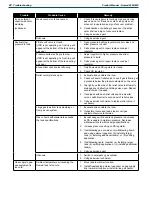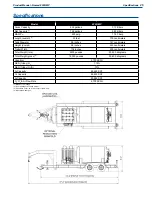
14
Filling Procedure
Product Manual - Nomad 830G MP
3
As the filling proceeds and the tank gets cooler, you
should be able to pinch off and, in some cases, close the
vent valve. We recommend that you do not fill the tank
to the full trycock on the first fill. Fill to 75% in order to
allow for liquid expansion as the tank contents absorb
heat while the metal continues to cool down over time.
Optional Equipment
Chart’s Nomad 830 mobile MicroBulk system can be
ordered with a variety of option kits that make it a truly
versatile product
Single / Dual Regulating Control with
6-Port Gas Use Manifold
The single/dual regulating control manifold regulates
the outlet gas to 100 psig or lower, ensuring downstream
equipment can be operated safely. It is equipped with
pressure gauges, a backup fill port and regulator bypass for
easy servicing. The dual regulating control can be configured
for maximum gas flow by opening both regulator isolation
valves at the same time, allowing gas to flow through both
circuits simultaneously. The 6-port gas use manifold allows
for high volumes of gas to be supplied to multiple users at
once
Photo 5 - Regulating control
Description
Part Number
Single Regulating Manifold
20939331
Dual Regulating Manifold
20939330
Bulk Fill Kit
The bulk fill option kit includes a 1-1/2” CGA fitting that
allows the user to rapidly fill the Nomad 830. Refer to page
13 for the complete fill procedure.
Photo 6 -
Bulk fill option kit
Description
Part Number
Nitrogen Bulk Fill Kit
20939380
Argon Bulk Fill Kit
20946907
Oxygen Bulk Fill Kit
20946908
Liquid Delivery
Cryogenic liquid can be pressure transferred from the
tank to other cryogenic equipment that operates at a lower
pressure than the tank. To make a liquid transfer follow this
procedure:
Caution! If liquid can be trapped in the
transfer system, a suitable relief
valve must be installed to prevent
over pressurization.
Caution! Before making a liquid transfer
be sure that protective
eyeglasses and gloves are being
worn. If the transfer is being
made to an open top vessel, the
transfer pressure should be as
low as possible and a phase
separator should be used to
eliminate splashing and hose
whip.
1
Connect the transfer hose to the liquid valve connection
of the tank.














